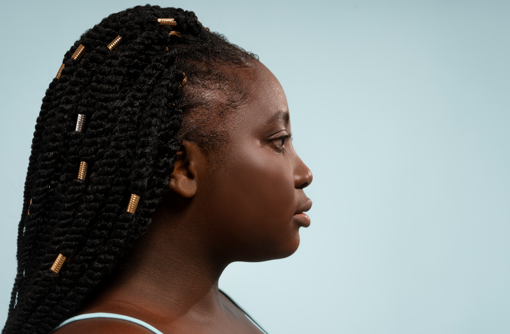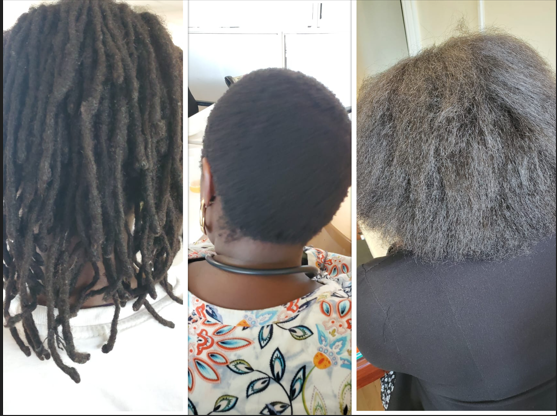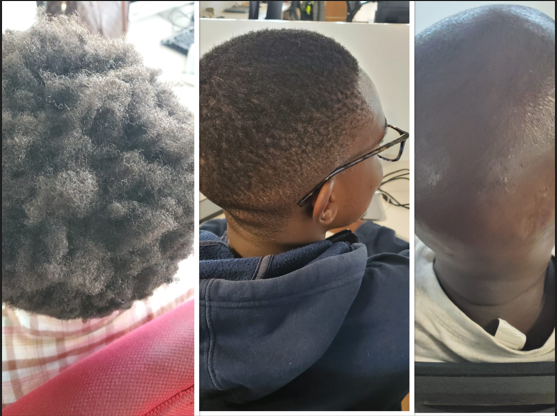
Kenyan creativity shines in Sustainable Fashion
The dialogue centred on Kenya's role as a rising hub for ethical fashion
Hair has become a canvas of self-expression — no longer confined by gender norms
In Summary

Through the generations, Kenyans have embraced a wide range of hairstyles — from traditional braids to edgy buzz cuts.
The evolution and resurgence of these styles reflect not only cultural pride
but also a celebration of personal expression and boldness.
For many Africans, including Kenyans, hair is considered sacred. Grooming is often entrusted to salonists and barbers with whom clients build long-term relationships.
It's common to stay loyal to a single hairdresser, with only a few opting to
switch between specialists.
Hair has become a canvas of self-expression — no longer confined by gender norms, tradition, or conformity.
With this evolution, age no longer matters. There are no rules. Men wear
braids. Women rock fades. Kids express themselves early, and elders are
embracing styles they never dared try in their youth.
Take the fade, for example: a hairstyle where the barber cuts the hair short at the back and sides, leaving it longer at the top.
Styles like this have become a symbol of modern identity, worn with confidence
across age groups.
From the sacred braids of the past
to the rebellious buzz cuts of today, the evolution of Kenyan hairstyles is a
living narrative — one that continues to grow, twist, and turn with every
generation.
Walk the streets of Nairobi today,
and you’ll see it all — shaved sides, rainbow-dyed locs, waist-length faux
locs, sharp buzz cuts, and braids adorned with beads and shells.
For Dee, the journey has been far from smooth. After struggling with breakage and persistent scalp irritation, she made a major change.
“I changed my salonist in June 2023. It wasn’t a difficult decision — I needed
someone who truly cared for my hair. The previous one used products that left
my scalp itching for days,” she shared.
Before switching to locs, Dee kept her hair natural.
“I hated the pulling during styling. It gave me headaches and made it hard to sleep,” she recalled.
Even after trying artificial locs, she found them too heavy. Now, Dee always carries her own hair wax, conditioner, and shampoo to the salon.
“I prefer using products I trust,” she added.

Bosco, on the other hand, says his haircuts have mostly been influenced by fashion, job requirements, and a sense of maturity.
“In my youth, I tried fades and punk styles. But as I grew older, I settled for a clean shave,” he said.
His current look pairs well with his wardrobe of suits. “I don’t have many
options now — a clean shave suits my style.”
For Mike, it’s always been about the taper fade — inspired by Real Madrid star Jude Bellingham.
“I’ve stuck with one barber, and I wash and condition my hair at least once a
week,” he said.
Rose swears by knotless braids after a traumatic experience with hair breakage.
“They’re easy to maintain and don’t pull on your roots, so there's no breakage. Plus, there are so many ways to style them,” she said.
She unbraids her hair after three weeks, takes a one-week break to enjoy her
natural hair, and then braids again — always with her trusted hairdresser who
knows her hair texture well.
Hillary is loyal to his fade, which he says complements his head shape.
Odeny agrees. “I’ve stuck with the same barber because he knows exactly how I like it — no need for instructions."
For Purity, twist-outs on her natural hair are her signature look.
While she braids occasionally, twist-outs remain her go-to.
“The key is to oil it frequently so it doesn’t dry out. I have two salonists —
one in my hometown and another in Nairobi,” she explained.
Tracy has experimented with nearly everything — from shaving and curling to dyeing and protective styles.
“I relaxed my hair at some point because of my texture. I’ve worn it straight, curled, and even dyed it maroon in college. I eventually cut it all off and started fresh. Now, I’m leaning more into protective styles,” she said.
She’s stayed with her salonist for 15 years.
Over time, many young women have moved away from chemical relaxers in favor of afros, twist-outs, and bantu knots.
YouTube tutorials and natural hair blogs have become the new stylists. Shea butter and coconut oil have replaced perms and gels.
For men, it has been punk and clean shaves.
As haircuts and hairstyles, continue evolving, it is also important to remember that resurgence is still a thing of the present.
 A collage of various haircuts
A collage of various haircuts

The dialogue centred on Kenya's role as a rising hub for ethical fashion